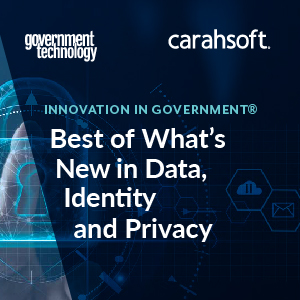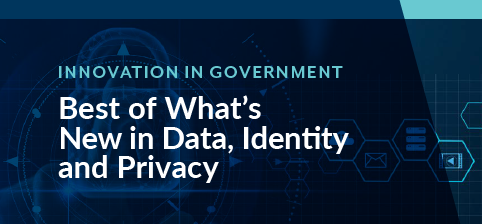Last year, state lawmakers across the nation introduced hundreds of privacy bills. One of the most prominent pieces of legislation — the California Consumer Privacy Act (CCPA) — took effect in January, marking the first of potentially many state-level attempts to emulate the European Union’s groundbreaking General Data Protection Regulation (GDPR), which gave EU residents more control over how organizations use their personal information. All of this points to a dramatic shift in how state and local government agencies must manage and protect data. Fortunately, technology tools available to help the public sector address privacy challenges are growing smarter and more sophisticated. Learn the latest insights from industry thought leaders in Data, Identity and Privacy in Carahsoft’s Innovation in Government® report.
 Protecting the Data That Matters Most
Protecting the Data That Matters Most
“Organizations should avoid the temptation to skip requirements and get things out there quickly. This crisis forced organizations to establish work-from-home policies overnight. Work-from-home technologies — whether employee-owned or government issued — must incorporate the organization’s security processes and policies around sensitive data. Government-issued laptops should have remote access capability to keep OS and security product patches up to date, ensure VPN connections are working and generally maintain security standards. It’s also important to conduct and continually reinforce security awareness training focused specifically on working at home or remotely. Then, make the new normal as simple as possible; have everything in place for users to just basically turn on their laptop and log into the system.”
Read more insights from Dell Technologies’ Chief Strategy and Innovation Officer of State and Local Government, Tony Encinias.
Simple, Smart and Fast: Search-Driven Analytics for Data Privacy and Compliance
“Clearly defined use cases are critical. What questions do agencies need to answer to fulfill their mission, and what data do they need to obtain those answers? Once you find that data, how do you store it, and how do you track compliance requirements on that data? How do you enable data sharing and transparency without interfering with privacy and security? Another critical piece is the criteria and best practices used for tool selection. Can you get to granular levels of data and customize security clearances down to the role level or column level so you can govern who’s seeing what without having to create duplicate data lakes for each department? That can create a lot of economies of scale and enable organizations to more easily and confidently share data across agencies.”
Read more insights from ThoughtSpot’s Senior Director of Global Public Sector and Industry Alliances, Helen Xing.
Using a Data-Centric Approach to Reduce Risk and Manage Disruption
“AI and ML have a lot of potential to streamline privacy and compliance, but they also come with certain risks. For example, AI/ML require systems to be trained. If systems are trained inadequately or with inaccurate data, the result may be poor decisions that ultimately cause more damage than good. This is why, as discussions about the use of AI and ML continue, we expect to see more emphasis on accountable development and usage. In practice, this means having requirements around transparency of AI usage, decisions and data quality, as well as robustness in terms of AI security and resilience.”
Read more insights from Broadcom’s Global CTO and Chief Architect for Symantec Enterprise Division, Paul Agbabian.
Leading Through Change
“People have been self-servicing analytical needs for years because they need to answer their own questions rapidly. But are people asking the right questions and are they doing all that in the most efficient digital forms? Proficiency is one of the core capabilities defined in the Tableau Blueprint, which is a prescriptive, proven methodology for becoming a more data driven organization. Proficiency speaks to the need to educate people to see and understand data for decision-making. That includes educating them on how to work with data, measuring the value that they derive from their use of data, and institutionalizing best practices that drive behavior change and informed decision-making.”
Read more insights from Tableau’s Senior Manager of Customer Success, Jeremy Blaney.
Download the full Innovation in Government® report for more insights from these Government Data, Identity and Privacy thought leaders and additional industry research from GovTech.







